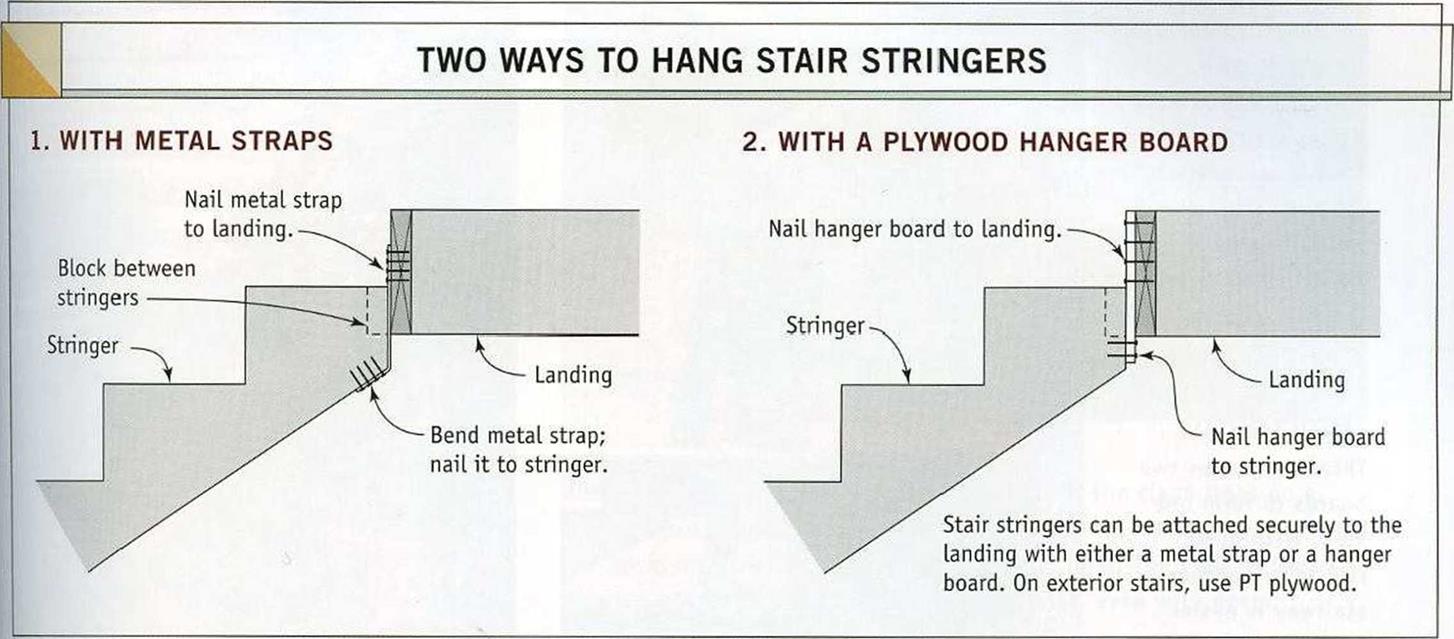Install the stringers and treads
If you’ve done the stair layout and cutting correctly, the stringers should fit against the rim joist (or beam), with the level cut or cleat for the top tread located ТА in. down from the top of the deck framing. Snap or mark a line at I that level on the rim joist so you can make I sure the stringers are aligned. I
There are several ways to secure the I
stringers to a deck beam or rim joist. Some – I times the stringer butts against a post, so it I can simply be nailed to the post and to the I beam or rim joist. In other situations, a metal I strap can be nailed to the top of the stringer, I then to the beam or rim joist (see the bottom I photo at left). Still another option is to fasten I a PT plywood hanger board to the top plumb – I cut edge of each stringer, then nail the board I to the beam or rim joist (see the illustration I on the facing page). I
For a set of 36-in.-wide closed stringer I stairs, cut a hanger board 14 in. high and I
39 in. wide, then nail it flush with the top of I
the deck s 2×6 rim joist. Then measure down | 7Vi in. from the top of the rim joist, mark the 1 board on each end, and strike a line across it I at that height. Drive 8d galvanized nails I through the back of the hanger board and I into the stringers below the 2×6 rim, making sure the top of the upper cleats on both out – I board stringers and the top notch on the inte* I rior stringers land on the line you snapped on the hanger board. To stiffen the top of the I stairs, cut and install PT 2×4 blocking between the stringers.
Next, cut a 36-in.-long PT 2×4 kicker board I and nail it into the notch of the middle stringer and to the outside stringers. The kicker board
 |
can be fastened to the concrete landing or base with hardened nails, steel pins, or concrete anchors.
Now that you know how to build a simple set of stairs—a good skill to learn for its own sake—let me tell you about an alternative to wooden stringers. You can buy manufactured metal stringers with a 7-in. rise (see Resources on p. 278). This means that you will have to control the overall distance (from the concrete landing to the finished surface of the deck) so that its a multiple of 7—either 14 in., 21 in.,
28 in., or 35 in. I like metal stringers because they are galvanized and stand up well outdoors. Holes in the metal stringers allow you to attach treads with screws or small bolts.






Leave a reply